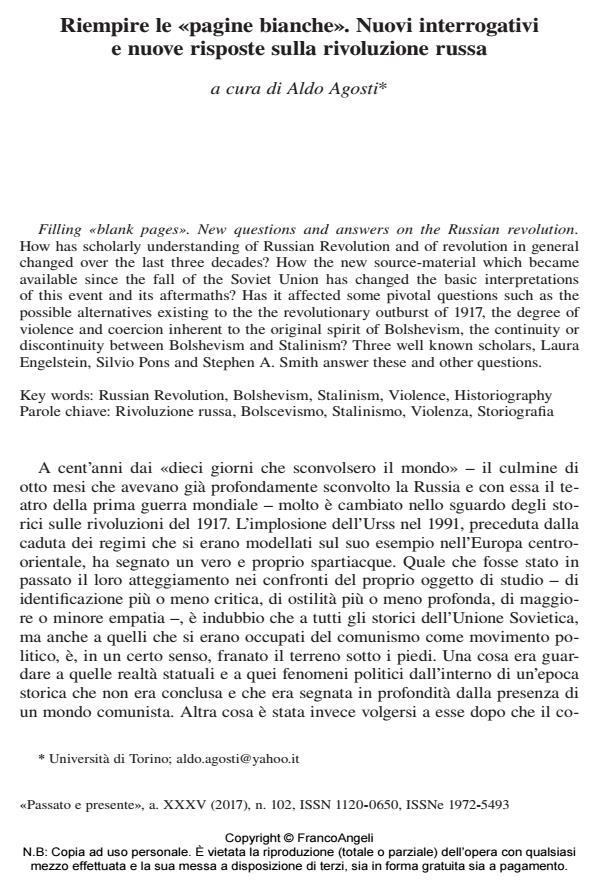Riempire le «pagine bianche». Nuovi interrogativi e nuove risposte sulla rivoluzione russa
Titolo Rivista PASSATO E PRESENTE
Autori/Curatori Aldo Agosti
Anno di pubblicazione 2017 Fascicolo 2017/102
Lingua Italiano Numero pagine 28 P. 19-46 Dimensione file 204 KB
DOI 10.3280/PASS2017-102002
Il DOI è il codice a barre della proprietà intellettuale: per saperne di più
clicca qui
Qui sotto puoi vedere in anteprima la prima pagina di questo articolo.
Se questo articolo ti interessa, lo puoi acquistare (e scaricare in formato pdf) seguendo le facili indicazioni per acquistare il download credit. Acquista Download Credits per scaricare questo Articolo in formato PDF

FrancoAngeli è membro della Publishers International Linking Association, Inc (PILA)associazione indipendente e non profit per facilitare (attraverso i servizi tecnologici implementati da CrossRef.org) l’accesso degli studiosi ai contenuti digitali nelle pubblicazioni professionali e scientifiche
How has scholarly understanding of Russian Revolution and of revolution in general changed over the last three decades? How the new source-material which became available since the fall of the Soviet Union has changed the basic interpretations of this event and its aftermaths? Has it affected some pivotal questions such as the possible alternatives existing to the the revolutionary outburst of 1917, the degree of violence and coercion inherent to the original spirit of Bolshevism, the continuity or discontinuity between Bolshevism and Stalinism? Three well known scholars, Laura Engelstein, Silvio Pons and Stephen A. Smith answer these and other questions.
Parole chiave:Rivoluzione russa, Bolscevismo, Stalinismo, Violenza, Storiografia
Aldo Agosti, Riempire le «pagine bianche». Nuovi interrogativi e nuove risposte sulla rivoluzione russa in "PASSATO E PRESENTE" 102/2017, pp 19-46, DOI: 10.3280/PASS2017-102002